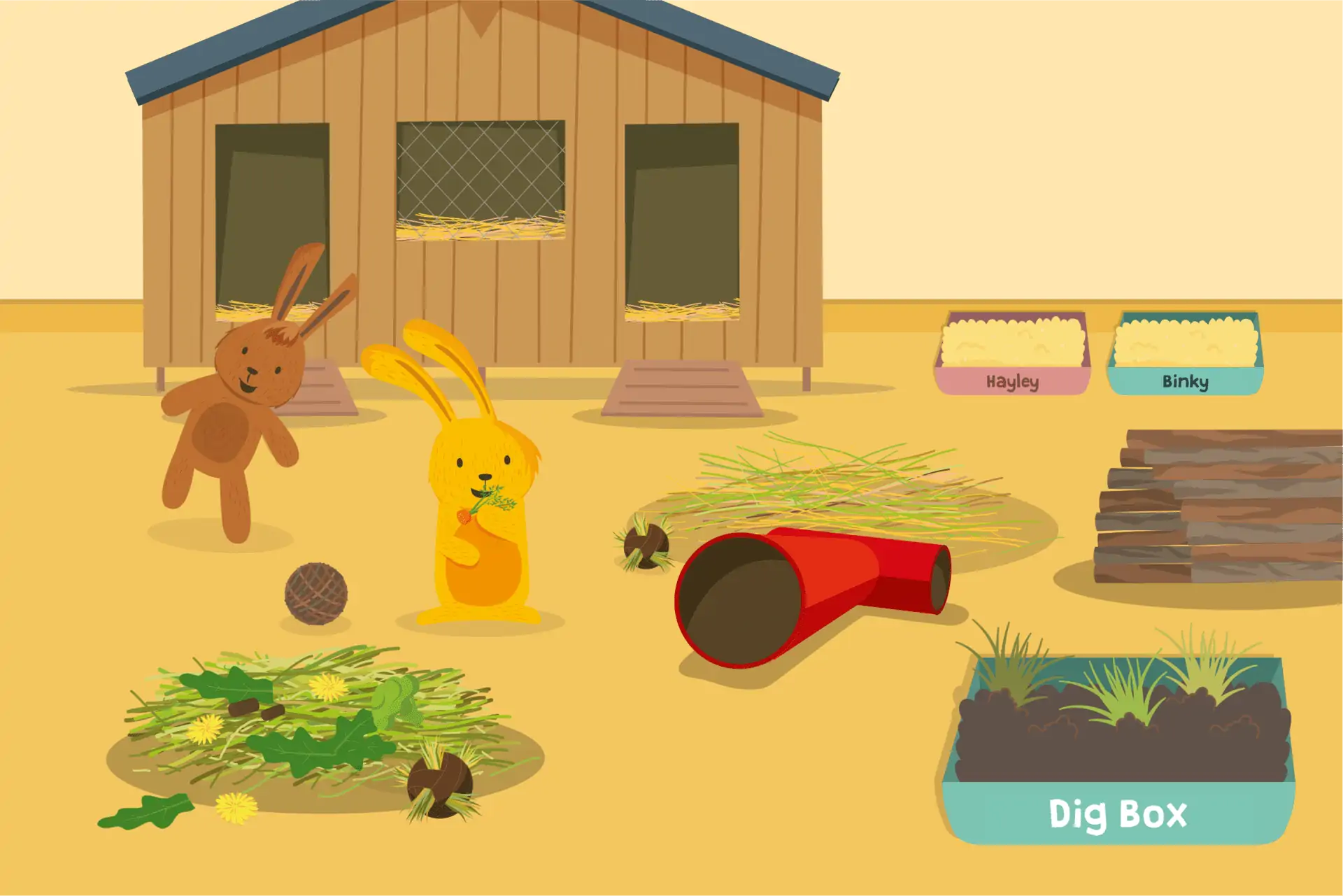Your Rabbits’ Environment
Understanding rabbit behaviour
Rabbits can be a great addition to the family. Once they get to know you, rabbits can be very friendly, showing you affection, plus they’ll definitely let you know what’s what! Understanding what your rabbits are trying to tell you is a great way to secure your bond and lead a happy life together.
Rabbits are prey animals, so their natural response is to run and hide if they feel threatened. You might notice at first your rabbits are shy around you, but with a little patience and regular interaction, you’ll soon become the best of friends. It’s also a good idea to have hiding places in their housing to give them somewhere to hide and to feel safe. For more information, check out our housing guide.

What are they trying to say?
The key way to understanding rabbit behaviour is being able to speak their language (or at least understand it!).
Here are some of the most common rabbit behaviours and how rabbits communicate.
The rabbit dictionary
Binky
Have you noticed your rabbits jumping in the air and twisting? This is called a binky! This is a great sign and shows that they’re feeling very happy and playful.
Biting
If you get a small nip from your rabbit, like a little pinch, this could be a sign that your rabbit wants your attention now, or that they’re giving you a warning. If your rabbit bites you hard, this could be a sign of fear or stress.
Ears on alert
When your rabbit’s ears are up, something has got their attention and they’re on alert. Similarly, with their ears back, they’re very relaxed.
Grinding their teeth
When rabbits grind their teeth, listen out for how loud they are. Gentle, soft grinding (like a purring cat) is a sign of contentment. If you hear your rabbit grinding their teeth loudly, they’re in pain and need to see a vet as soon as possible.
Licking you or each other
Rabbits show affection by licking each other, so this a great way to see that you’re doing great!
Thumping
Rabbits thump to communicate that there’s danger around. It can also be a sign that they’re annoyed and often means stop doing what you’re doing!
Playing games with your rabbits
Playing games is a great way to keep your rabbits entertained, prevent boredom, and encourage them to exercise. There are plenty of boredom breakers and rabbit-friendly toys out there that you can include in their housing to provide them with enrichment.
Some great games to play with your rabbits include the hopping challenge – build a low wall out of items like cardboard boxes and encourage your buns to hop over them with a tasty treat. Or try the nibble and sprint – encourage your rabbit to follow you with some tasty greens such as parsley! Plus, rabbit zoomies are really cute! For more great games, check out our blog.
Are rabbits nocturnal?
Rabbits sleep a lot during the day, and then again in the middle of the night. They’re crepuscular – which means they’re most active at dawn and dusk.
This means they need constant access to plenty of high quality feeding hay or fresh grass, food and fresh water in their housing. Rabbits also need lots of hiding places and toys to keep them entertained whenever they decide to wake up!
Training your rabbit
Did you know? You can train your rabbits to fetch, go back to their hutch, and respond to their name! It’s a great experience for both of you, providing enrichment for your buns and helping you grow closer.
A great way to train a new behaviour is via clicker training. A small click when your rabbit does what you want, followed by a treat helps them to learn that click means treat!
- Start with small pieces of a treat. Click your clicker, and then after a short pause, give them a treat.
- Repeat this until they have learnt to expect a treat after hearing the click.
- Encourage your rabbit to do a task, for example coming over to you. When they do (no matter how long it takes), sound a click and give them a treat.
- Once they’ve started to get the hang of the trick, start to introduce a cue word, for example ‘come’ or their name. You’ll need to repeat this 40 – 60 times in different situations, in different locations, before they pick it up.

